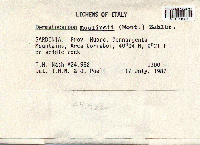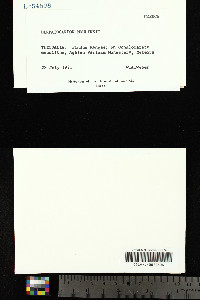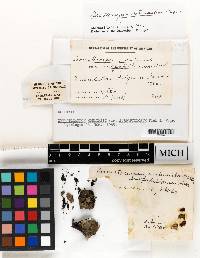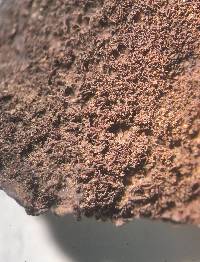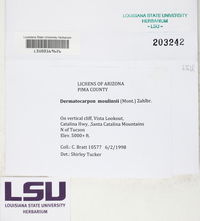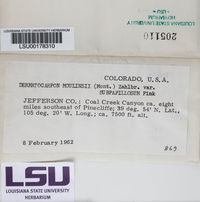
Consortium of Lichen Herbaria
- building a Global Consortium of Bryophytes and Lichens as keystones of cryptobiotic communities -
- Home
- Search
- Images
- Species Checklists
- US States: O-Z >
- US National Parks
- Central America
- South America
- US National Parks
- Southern Subpolar Region
|
|
|
|
Family: Verrucariaceae
|
Nash, T.H., Ryan, B.D., Gries, C., Bungartz, F., (eds.) 2004. Lichen Flora of the Greater Sonoran Desert Region. Vol 2. Thallus: foliose, single-lobed attached by a single umbilicus and with 17-32 wide lobes upper surface: gray, with epinecral layer consisting of air filled hyphae upper cortex: 70-100 µm thick, hyaline with outermost part, c. 10 µm, brownish algal layer: 50-120 µm thick medulla: 110-220 µm thick, of filmentous hyphae turning red with Melzer's iodine lower cortex: 50-70 µm thick, with the outermost 10-20 µm brown lower surface: light to dark brown with rhizinomorphs rhizinomorphs: consisting of cortex, 30-70 µm thick Perithecia: broadly obpyriform to globose, with hyaline exciple that is light brown to brown in the uppermost part asci: clavate or cylindrical, 8-spored ascospores: simple, hyaline, 10-13 x 5-8 µm Pycnidia: not found Spot test: all negative Secondary metabolites: none detected. Substrate and ecology: rocks, often growing on mossy rocks in shade World distribution: Eurasia, North America Sonoran distribution: Arizona, Sonora, and Chihuahua. Notes: Dermatocarpon moulinsii is characterized by the rhizinomorphs, which only consist of the lower cortex while the rhizinomorphs of D. schaecthelinii are thicker and have a medullary layer. Dermatocarpon moulinsii furthermore has thinner thallus and generally shorter spores than D. schaechtelinii. |
Powered by Symbiota









